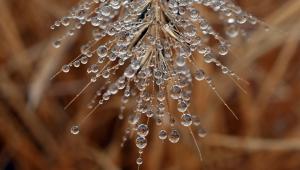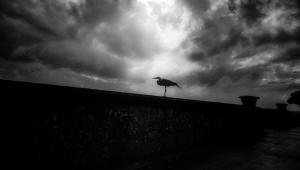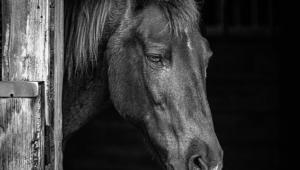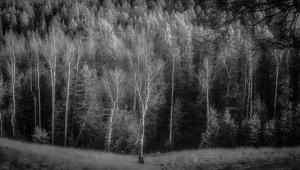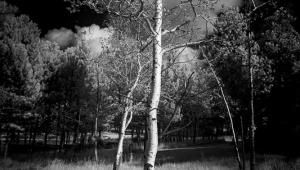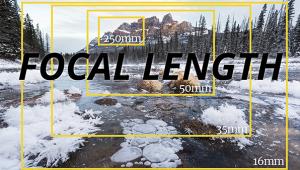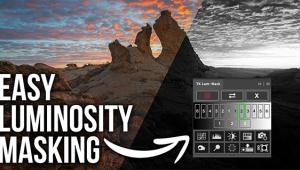Chris Faust is undeniably one of the best photographers of his generation.No doubt he has come a long way and has been recognized because of his great works. - James Stuckey
The Cultural Landscapes Of Chris Faust
I went into this determined not to portray fine art photographer Chris Faust
as some sort of oddity because, lo and behold, he still goes into the darkroom.
And as a photography teacher, he encourages others to do it, too.
But when I said, "I'm not going to approach this story as if you
were an oddity in the age of digital," he stopped me with, "Why
not? I am." And he was so good-natured about it, we made his darkroom
work the starting point of our conversation.
 |
|
|
"Look," he said, "I don't put digital down. It's
a tool, but it's not for me. I like the look of photographic paper. It's
all matte surface out there in digital land, and I don't like matte surface.
I like the rich feel of a silver print."
Then there's the issue of control of the image. Digital, he feels, does
not allow for the degree of interpretation, of personal choice, that darkroom
work brings. "It's move the slider to this position, or enter this
percentage, or click here," he says. "It's mechanical. But
in the darkroom, every print is different, and I don't mind that."
 |
He's not alone in feeling this way. Chris teaches photography in and
around the Minneapolis-St. Paul area, and he says, "I can't think
of a school in this town--the Minneapolis College of Art and Design, the
University of Minnesota, the College of Visual Arts, any of the schools that
teach photography--that doesn't run the students through wet darkrooms
to build up their intuitive sense. Of course there's judgment in digital--that's
too contrasty, that's too soft, but by how much and to what degree? In
digital it's by clicks and marks; in the darkroom it's by time and
temperature and chemicals--but it's really by your judgment.
"I tell my students it's like cooking. I tell them to think of it
as a recipe. I say we're going to do some home cooking to come up with
our own taste. The art of the darkroom is the originality of the print."
And digital? "Digital seems more like science than art."
 |
Which is an interesting statement, as Chris comes to art from science. "I'm
a scientist by trade," he says. "I have a degree in science, and
I worked at the University of Minnesota as a scientific photographer for 18
years in the fields of chemical engineering, geology, astronomy, and physics.
I think science and art are close cousins. Scientists and artists are trained
to observe. That's paramount: you have to observe, then interpret. Artists
interpret visually or with words, and scientists interpret by creating a hypothesis
and then trying to prove it. Scientists are more analytical, but nevertheless
they're looking for an interpretation of what they see."
As an artist, Chris likes to see in black and white. "It suits my vision,"
he says. When he composes a photograph he isn't distracted by color, concentrating
instead on composition and tonal scale. He also prefers black and white for
its archival nature. "Color dyes fade," he says, "and do we
really know if we'll get 200 years from an inkjet print? The scientist
in me is dubious. There's no `for sure' in science; only marketing
people say that."
 |
He does shoot color though, and sells more color prints than black and white,
although that's changing. "More and more people are choosing black
and white lately," he says.
- Log in or register to post comments




























